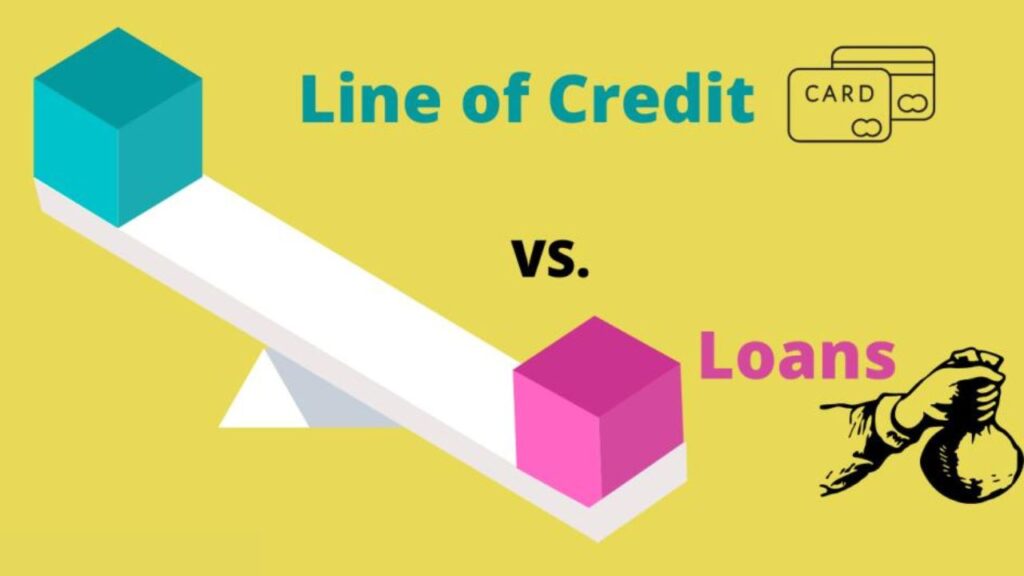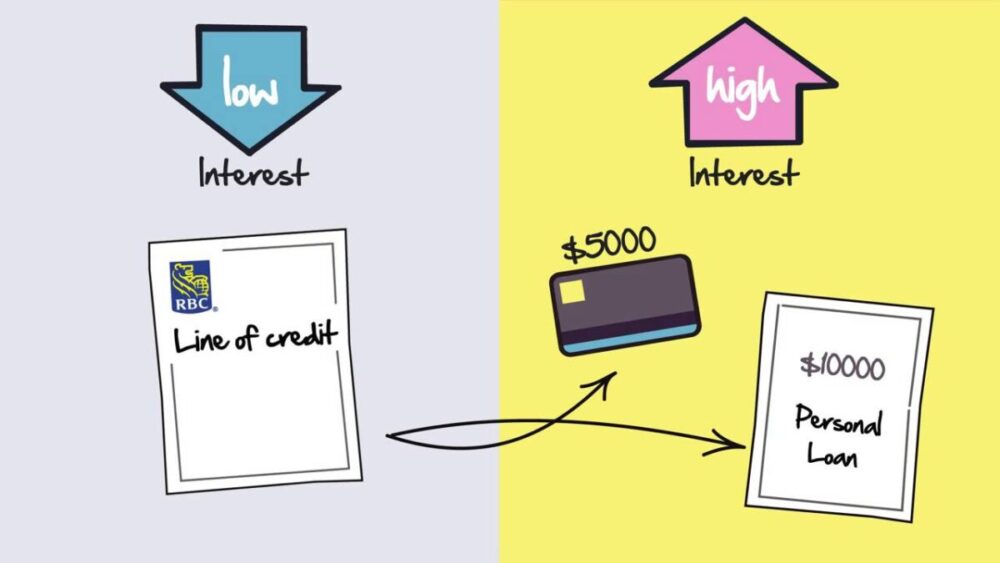Welcome to the world of financing options, where understanding the differences between a line of credit and a loan can empower you to make informed decisions about your borrowing needs. Both a line of credit and a loan serve as valuable financial tools for individuals and businesses, but they function in distinct ways. This comprehensive guide will shed light on the nuances of these two financing options, exploring their features, benefits, and considerations. Whether you’re seeking funds for personal expenses, business growth, or investment opportunities, delving into the disparities between a line of credit and a loan will equip you with the knowledge to choose the right financial solution for your specific circumstances.
Join us as we unravel the intricacies of a line of credit and a loan, enabling you to navigate the realm of borrowing with confidence. By understanding the fundamental differences between these two financial instruments, you can maximize the advantages they offer and make sound financial choices that align with your goals and aspirations.
One important consideration when exploring the differences between a line of credit and a loan is understanding how small business loans can impact personal credit. Click here to embark on a journey of financial literacy as we explore the distinctions between a line of credit and a loan, helping you to make informed decisions that suit your unique borrowing needs.
Key Features and Functions

Source: forbes.com
When comparing a line of credit and a loan, understanding their key features and functions is essential to make an informed borrowing decision. Here, we explore the fundamental characteristics that differentiate these two financing options.
Purpose and Usage
A line of credit provides borrowers with a predetermined credit limit from which they can draw funds as needed. It operates as a revolving credit facility, allowing borrowers to access funds multiple times without requiring a new application for each use. On the other hand, a loan offers a lump sum of money upfront, typically for a specific purpose, such as purchasing equipment, financing a project, or expanding a business.
Repayment Structure
With a line of credit, borrowers are required to make regular payments only on the outstanding balance they have utilized. The repayment amount varies based on the borrowed amount and the agreed-upon terms. In contrast, loans typically have a fixed repayment structure with regular installments consisting of both principal and interest. Borrowers make equal payments over a set period until the loan is fully repaid.
Access to Funds

Source: chase.com
A line of credit provides borrowers with ongoing access to funds up to the approved credit limit. They can withdraw funds as needed and repay them, which replenishes the available credit for future use. In contrast, a loan provides borrowers with a one-time lump sum amount, and once the funds are disbursed, no further access is available unless a new loan is obtained.
Interest Calculation
Interest on a line of credit is calculated based on the outstanding balance that the borrower has utilized. The interest is typically variable, tied to a benchmark rate such as the prime rate. As a result, borrowers only pay interest on the amount they have borrowed. In contrast, loans often have a fixed interest rate, and borrowers pay interest on the entire loan amount, regardless of how much is utilized or repaid.
The Flexibility of Use
A line of credit offers flexibility in its use as borrowers can draw funds for various purposes whenever needed. It is suitable for managing cash flow fluctuations, covering short-term expenses, or addressing unexpected financial needs. Loans, on the other hand, are often designated for specific purposes, such as purchasing assets, making large investments, or funding long-term projects.
Advantages and Disadvantages

Source: financebuddha.com
When considering a line of credit or a loan, it’s important to weigh the advantages and disadvantages of each option. Here, we explore the pros and cons to help you make an informed decision.
Line of Credit Advantages
- Flexibility: A line of credit provides borrowers with flexibility in accessing funds as needed, giving them control over when and how much to borrow.
- Cost-effectiveness: Interest is only charged on the amount utilized, potentially reducing interest expenses compared to a loan.
- Emergency Fund: A line of credit can serve as a valuable safety net, functioning as an emergency fund to address unforeseen expenses or temporary cash flow gaps.
- Financial Planning: With a line of credit in place, borrowers can have peace of mind knowing they have access to funds if and when needed.
Line of Credit Disadvantages
- Variable Interest Rates: Interest rates on a line of credit can fluctuate, potentially leading to increased borrowing costs over time.
- The temptation to Overspend: The accessibility of funds may tempt some borrowers to overspend, leading to increased debt and financial strain.
- Potential for Reduced Credit Limit: Lenders have the right to reduce a line of credit limit, making it important for borrowers to manage their credit responsibly.
- Shorter Repayment Terms: The repayment terms for a line of credit are typically shorter compared to a loan, requiring disciplined financial management.
Loan Advantages

Source: financebeagle.com.au
- Lump Sum Funding: Loans provide borrowers with a fixed amount of money upfront, which can be beneficial for specific purposes like major purchases or investments.
- Predictable Repayment: Loans typically have fixed interest rates and structured repayment plans, making it easier for borrowers to plan their budgets and manage payments.
- Longer Repayment Terms: Loans often offer longer repayment terms compared to lines of credit, providing borrowers with more time to repay the loan amount.
- Purpose-Focused: Loans can be tailored to meet specific needs, such as business expansion, home purchases, or debt consolidation.
Loan Disadvantages
- Interest on Full Amount: Borrowers pay interest on the entire loan amount, regardless of how much is utilized, potentially leading to higher interest costs.
- Limited Flexibility: Once a loan is disbursed, borrowers typically do not have access to additional funds unless they apply for a new loan.
- Prepayment Penalties: Some loans may have prepayment penalties if borrowers choose to pay off the loan early, limiting the flexibility to reduce interest costs.
Choosing the Right Option

Source: experian.com
When deciding between a line of credit and a loan, it’s important to assess your specific financial needs and circumstances. Here are some factors to consider when choosing the right option for you:
- Purpose of Financing: Determine the purpose of your borrowing. If you require funds for ongoing expenses or short-term cash flow management, a line of credit may be more suitable. On the other hand, if you have a specific one-time expense or investment in mind, a loan might be a better choice.
- Amount of Funds Needed: Consider the amount of money you require. A line of credit typically offers a predetermined credit limit, allowing you to access funds up to that limit as needed. In contrast, a loan provides a lump sum amount upfront, which may be more appropriate for larger funding needs.
- Repayment Flexibility: Evaluate your repayment preferences. With a line of credit, you have the flexibility to make minimum payments or pay off the balance in full, depending on your financial situation. Loans, on the other hand, typically have structured repayment plans with fixed monthly payments.
- Interest Rates and Fees: Compare the interest rates and fees associated with both options. Interest rates for lines of credit are often variable, while loans may have fixed rates. Assess the potential costs over time to determine which option is more cost-effective for your borrowing needs.
- Credit Score and Qualification: Consider your credit score and qualification requirements. Lines of credit may have less stringent eligibility criteria and may be accessible to borrowers with varying credit profiles. Loans, especially those with favorable terms, may require a higher credit score and more extensive documentation. When seeking an LLC business loan, it’s crucial to understand that your credit score and qualification requirements will play a significant role in the lending process. Just like with personal loans, lines of credit, or other forms of financing, lenders may assess your creditworthiness and evaluate your eligibility based on your credit score and the documentation you provide.
- Future Financial Needs: Think about your future financial needs. If you anticipate requiring ongoing access to funds for multiple purposes, a line of credit’s revolving nature may be advantageous. However, if you foresee a one-time expense with a set repayment period, a loan may be a more appropriate choice.
- Risk Tolerance: Evaluate your risk tolerance. Lines of credit provide greater flexibility but may also present a higher risk of overspending and accumulating debt. Loans offer structured repayment plans and may provide a more predictable financial arrangement.

















